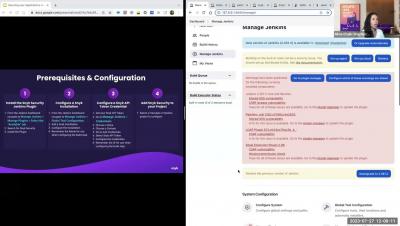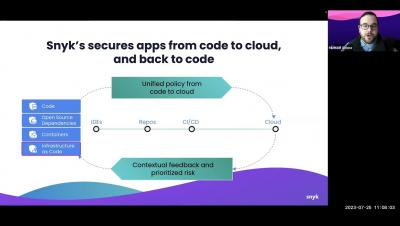Security | Threat Detection | Cyberattacks | DevSecOps | Compliance
Snyk
Snyk's 2023 State of Open Source Security: Supply chain security, AI, and more
The 2021 Log4Shell incident cast a bright light on open source software security — and especially on supply chain security. The 18 months following the incident brought a greater focus on open source software security than at any time in history. Organizations like the OpenSSF, AlphaOmega, and large technology companies are putting considerable resources towards tooling and education. But is open source software security actually improving? And where are efforts still falling short?
Open-source: The New Way of Envisioning Security
8 tips for securing your CI/CD pipeline with Snyk
Securing your CI/CD pipeline is critical to modern application security. So, we created a cheat sheet to make the process easier. In this post, we’ll cover using Snyk in your CI/CD pipelines to catch security issues quickly and empower your developers to fix them before they get to production.
Best practices for using AI in the SDLC
AI has become a hot topic thanks to the recent headlines around the large language model (LLM) AI with a simple interface — ChatGPT. Since then, the AI field has been vibrant, with several major actors racing to provide ever-bigger, better, and more versatile models. Players like Microsoft, NVidia, Google, Meta, and open source projects have all published a list of new models. In fact, a leaked Google document makes it seem that these models will be ubiquitous and available to everyone soon.
Finding and fixing insecure direct object references in Python
An insecure direct object reference (IDOR) is a security vulnerability that occurs when a system’s implementation allows attackers to directly access and manipulate sensitive objects or resources without authorization checks. For example, an IDOR can arise when an application provides direct access to objects based on user-supplied input, allowing an attacker to bypass authorization.
Best practices for effective attack surface analysis
An application’s attack surface is the sum of points where it might be vulnerable to bad actors. It consists of all the paths in and out of the application. Identifying vulnerabilities is vital to mitigating threats because any access point is a potential entry point for an attack. An attack surface analysis, which is critical to this mitigation strategy, is the process of identifying and assessing the potential vulnerabilities and risks in a software system or network.
Swift deserialization security primer
Deserialization is the process of converting data from a serialized format, such as JSON or binary, back into its original form. Swift provides multiple protocols allowing users to convert objects and values to and from property lists, JSON, and other flat binary representations. Deserialization can also introduce unsuspecting security vulnerabilities in a user’s codebase that attackers could exploit.
XS leaks: What they are and how to avoid them
Cross-site leaks (XS leaks) are a class of web security vulnerabilities that allow hackers to obtain sensitive information from a user’s browsing session on other websites or web apps. Modern web applications share data through various features and APIs — a function attackers can exploit to access this user data.











